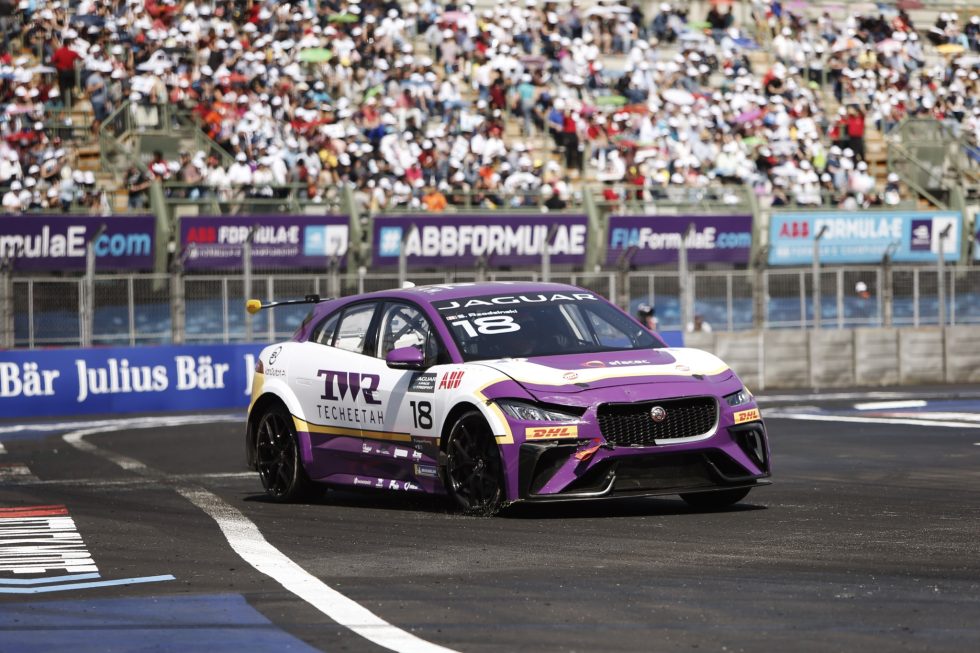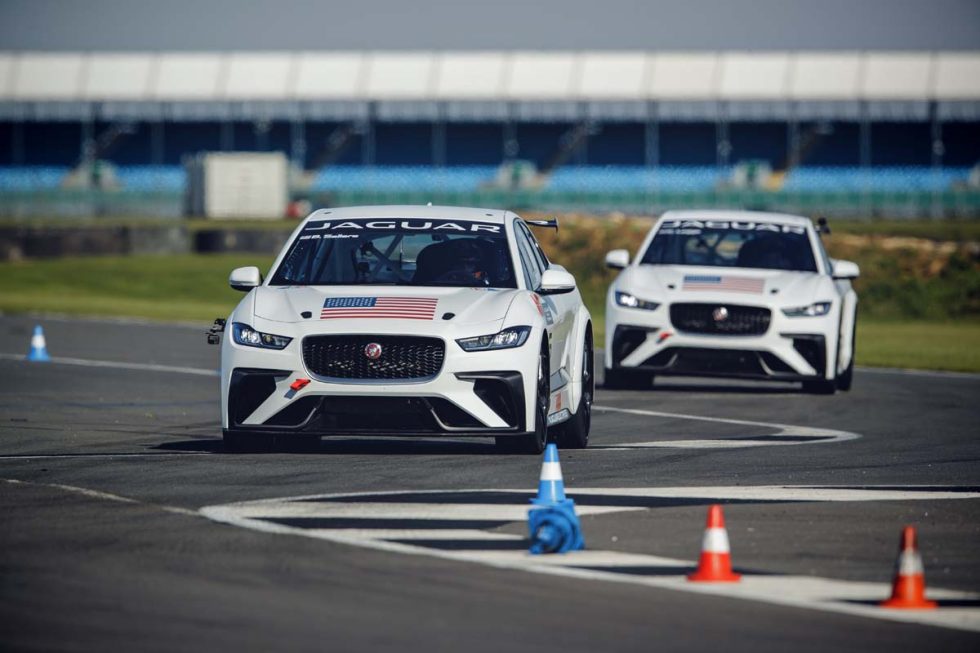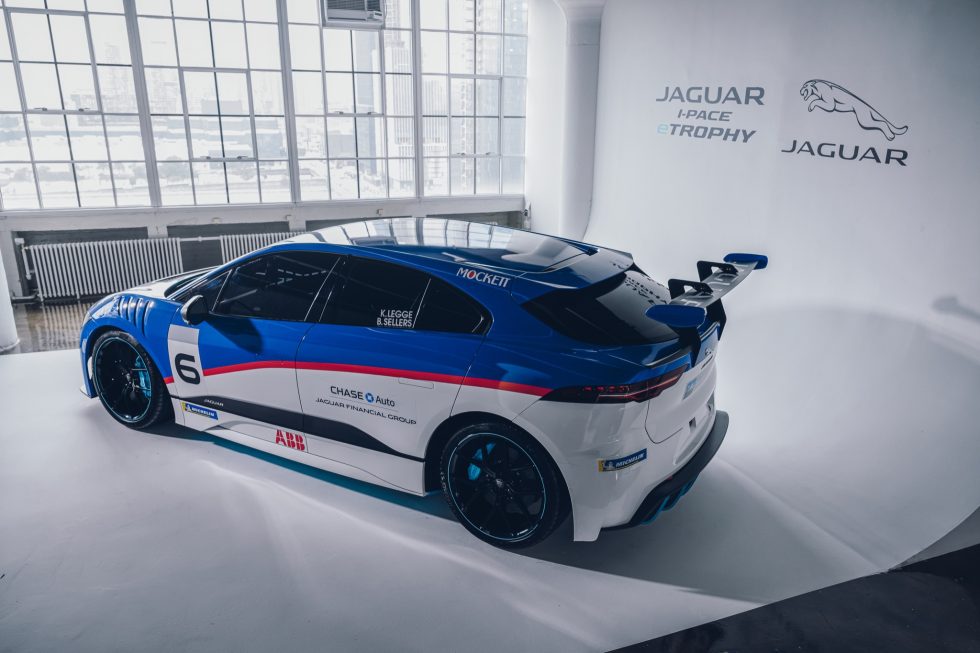“Win on Sunday, sell on Monday.” Like many aphorisms from an earlier time, this no longer works quite as well as it did. But for an auto industry trying to persuade people it’s OK to buy one of their newfangled electric vehicles, some racetrack glory never hurts. That’s the thinking behind the Jaguar I-Pace eTrophy, which sees a grid of identical electric Jags duke it out as a support act during a Formula E event.
One-make series like the I-Pace eTrophy aren’t exactly new. And for a manufacturer like Jaguar, you can see the appeal: whoever wins on Sunday (technically Saturday in the case of most ePrix events), they’ll be driving an I-Pace. But that doesn’t mean they aren’t good entertainment.
The annual Toyota pro-am race at IndyCar’s Long Beach Grand Prix was always a highlight of that weekend, until the company called time. The International Race of Champions series showcased drivers from different disciplines in identical Porsche 911s, then Chevrolet Camaros. Even Formula 1 crowds have been entertained by one-make races. BMW’s M1 Procar series traveled with the F1 circus for a couple of years and drew in some of F1’s then-stars to compete. Jaguar even gave us the short-lived but dramatic Intercontinental Challenge, a three-race series for the XJR-15 supercar that offered a $1 million prize for the winner.

Jaguar
Of course, a support series for Formula E could only work if it involved electric cars. Tesla under Elon Musk has no interest in motorsport, so we’re unlikely to see Model 3s racing between the barriers at an ePrix. (The Electric GT series is unaffiliated with Tesla and now appears quite delayed.) Chevrolet ignored my suggestion to step up with the Bolt EV. But over in Coventry, bright minds were thinking alike. Jaguar has often used racing both to improve its road cars and to glamorize them. And it was so sure of the I-Pace’s on-track ability that it even let us lap the car at Portimão when we first drove it.
The Rahal Letterman Lanigan team—yes, that Rahal, and yes, that Letterman—was the first to sign on, announcing that it would employ the racing drivers Katherine Legge and Bryan Sellers for the inaugural season. I’d spoken with Rahal in the past about why he decided to get involved, but in the run-up to this year’s New York ePrix, I spent some time chatting with Sellers to get a driver’s perspective on the whole thing.
It turns out Sellers didn’t need much convincing to sign up; the draw of driving for a legend like Rahal—a fellow Ohioan—was too much to resist. Jaguar’s involvement helped, too. Also, “this is the direction motorsport is going, and it’s better to get on the train at the first stop, not the last stop. You can either make a splash or you can’t. Formula E started to break the mold of what EVs are capable of, but Jaguar is doing that for an EV for an everyday driver. They have a mindset that thinks ‘if we can convince race car drivers, we can convince a lot of other people,'” Sellers told me.

Jaguar
Sellers’ first time driving an I-Pace—driving any EV for that matter—came when he and Legge went to Silverstone in England for the first test day. And he admitted he turned up with some unfavorable expectations. But like many people who step out of an EV after their first drive, “It didn’t take long for it to change my mind and understand that this is certainly the way of the future,” he said.
As a race car, the I-Pace is certainly quite different to the GT cars that he’s better known for. (In 2018, Sellers and his teammate Madison Snow won the GTD championship in IMSA’s WeatherTech series, racing a Lamborghini Huracan GT3.) “You can start and say that obviously all EVs are heavy, and one of the things I’ve found to be the most impressive about the I-Pace is that it’s 4,500lbs [2,000kg],” Sellers explained. “When you hear that number you think “how is this thing going to be to drive?” But it’s pretty impressive, and you don’t feel the weight because of the low center of gravity. They’ve taken what could have been a lead sled and a pig of a car that’s beyond impressive.”
However, electric cars do away with some of the cues that racing drivers learn to depend on. “It’s like sensory deprivation, losing the link between engine noise and RPM. One of the biggest differences is understanding how the torque curves work versus in an internal combustion engined car. In a standard race car with six gears, that operates significantly different with an EV where torque is related directly to the speed you’re traveling. The driving style changed… but purists can rest assured that the dynamics are the same,” he told me.

Jaguar
The I-Pace eTrophy cars aren’t as far removed from the road-going EV as Sellers’ normal race car is from its street car. They feature a roll cage and some aerodynamic wings, but they’re quite close to stock otherwise and even race on treaded street tires. But they still offer the racing driver some gadgets—they prefer the term “tools”—to tweak the car’s performance during a race. I’d have expected that the foremost of these would be altering the how and when to regenerate energy to the battery, but I was wrong.
“We are limited in what we can do, but the tools we have are fairly useful. As a driver, we have brake bias we can tune, ABS we can tune, and regen[eration] we can tune. Regen is probably the smallest piece of the puzzle because we need it for battery consumption. We also have a tool to tune the torque split between the front and rear axles, so we can distribute it from 50:50 to +5, +10, +15 rearwards,” he said.
From the sounds of it, Sellers is enjoying the eTrophy series, where he’s currently in second place overall in the Pro class with wins in Hong Kong and Paris to his name. For one thing, the series has meant traveling to new places and learning new tracks. “For the last how-many years, I’ve been on the same tracks again and again,” he told me. “We’d go to Sebring to test, eight times a year at 2-3 days each. You can’t teach me much about Sebring now! This opportunity to travel the world and race on street courses has been so rewarding. Learning new tracks again, getting to see things I’ve never seen—it’s a pretty surreal opportunity. Driving the race car is obviously the cherry on top, but I didn’t think I’d travel to Hong Kong [and] was certain I’d never go to Saudi Arabia.”
Listing image by Jaguar
Không có nhận xét nào:
Đăng nhận xét